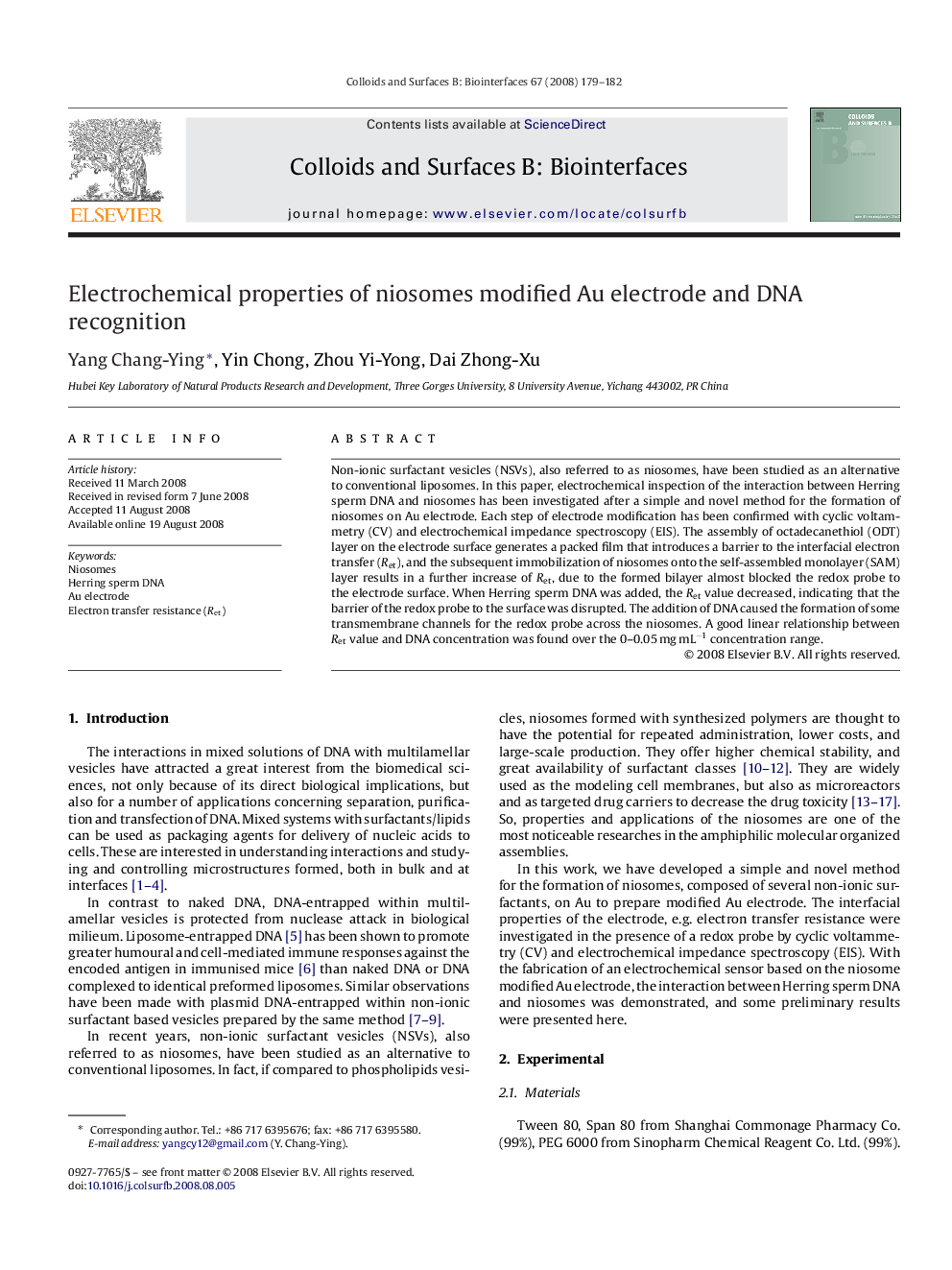| Article ID | Journal | Published Year | Pages | File Type |
|---|---|---|---|---|
| 601914 | Colloids and Surfaces B: Biointerfaces | 2008 | 4 Pages |
Non-ionic surfactant vesicles (NSVs), also referred to as niosomes, have been studied as an alternative to conventional liposomes. In this paper, electrochemical inspection of the interaction between Herring sperm DNA and niosomes has been investigated after a simple and novel method for the formation of niosomes on Au electrode. Each step of electrode modification has been confirmed with cyclic voltammetry (CV) and electrochemical impedance spectroscopy (EIS). The assembly of octadecanethiol (ODT) layer on the electrode surface generates a packed film that introduces a barrier to the interfacial electron transfer (Ret), and the subsequent immobilization of niosomes onto the self-assembled monolayer (SAM) layer results in a further increase of Ret, due to the formed bilayer almost blocked the redox probe to the electrode surface. When Herring sperm DNA was added, the Ret value decreased, indicating that the barrier of the redox probe to the surface was disrupted. The addition of DNA caused the formation of some transmembrane channels for the redox probe across the niosomes. A good linear relationship between Ret value and DNA concentration was found over the 0–0.05 mg mL−1 concentration range.
